Some call her the first witch, others a she-devil, and for some, she is the first feminist figure in history. Lilith was created alongside Adam—not from a piece of him. And that made all the difference.
A Rebel Among the Myths
Lilith embodies two seemingly contradictory ideas: she is both the first female demon and the first feminist. Yet, these concepts are not as disconnected as they seem—much like the experience of women throughout history. Perhaps Lilith can best be described as “the first feminist of ancient times—one who accepted, then defied, the monstrous image patriarchal society cast upon her.”
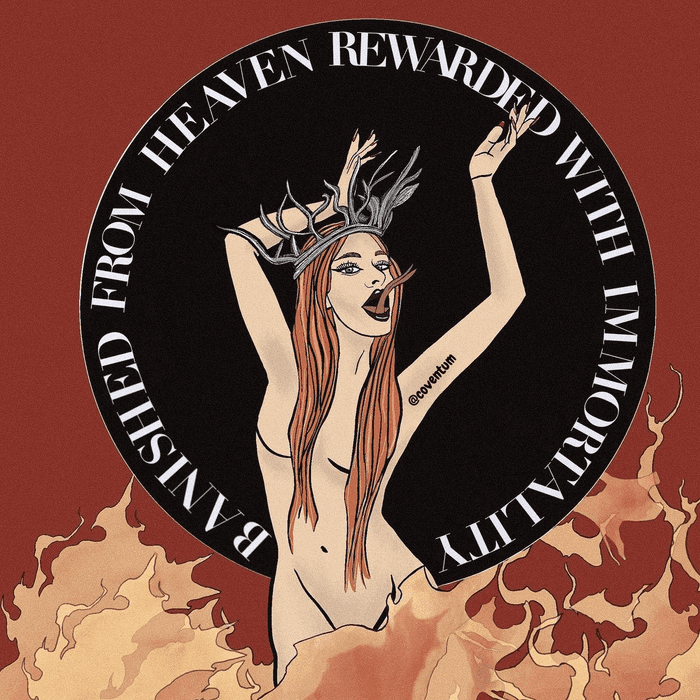
Feminism, at its core, opposes gender-based discrimination and seeks to protect women’s rights. And that is precisely where Lilith’s story begins. In Sumerian mythology, Lilith is mentioned as Adam’s first wife. She refused to conform to patriarchal expectations, choosing rebellion instead. But, as with all defiant women in myth and history, her defiance came at a cost.
In Search of Lilith
In Islamic tradition, Adam and Eve are considered the first humans. However, in Judaism and Christianity, traces of an earlier wife—Lilith—emerge. She appears in Sumerian, Babylonian, and Persian mythology, as well as in Hebrew texts, the Jewish Talmud, and even the Epic of Gilgamesh.
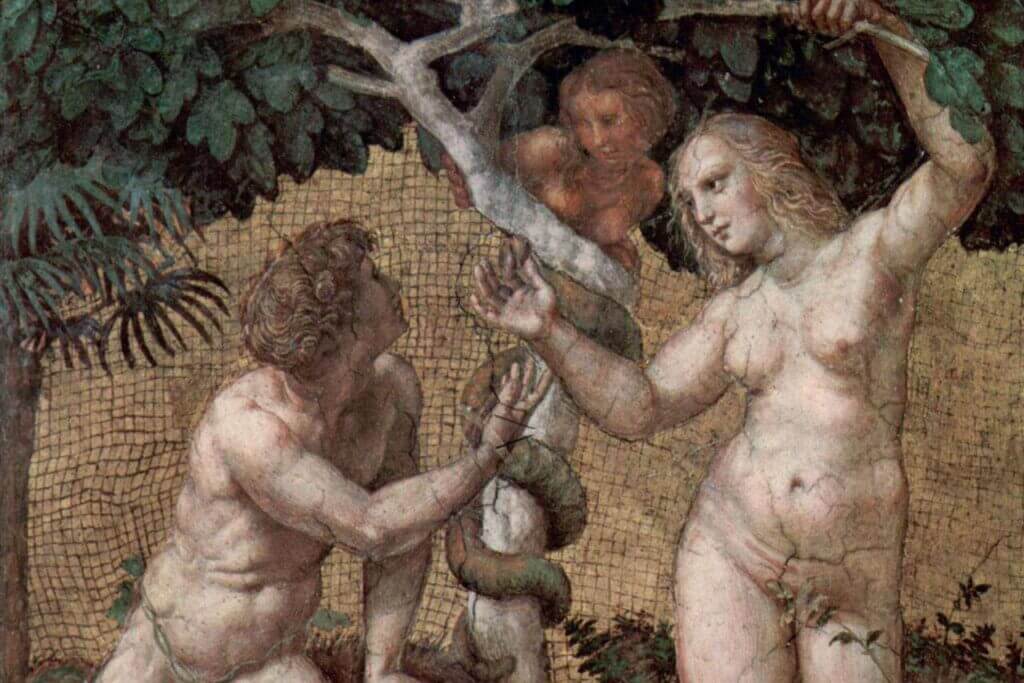
Her presence extends into art as well. In Michelangelo’s Sistine Chapel fresco The Original Sin and the Expulsion from Paradise, a half-snake woman coils around the tree of knowledge. That’s Lilith—the very one who lured Adam and Eve into committing the original sin.
She makes another appearance among the high-reliefs of Notre Dame Cathedral in Paris. There, Adam and Eve stand on either side of the tree. Eve, holding the forbidden fruit in one hand, passes it to Adam with the other. And wrapped around the tree, grinning insidiously at their downfall, is Lilith herself.
Adam’s First Wife
The origins of Lilith’s character remain uncertain. Some believe she was inspired by the “Lillu” spirits—Sumerian wind nymphs. Others trace her back to Mesopotamian sukuba (female night demons), known as “lilin.”
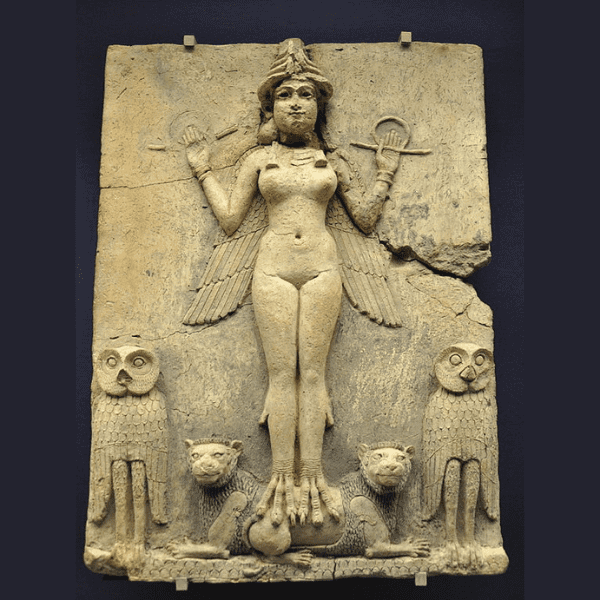
Lilith appears throughout ancient texts, including the Babylonian Talmud. And while her name isn’t directly mentioned in the Bible, a clue hides in Genesis 1:26-27:
“So God created humanity in divine form, male and female. God created them.”
Here, man and woman are made at the same time—unlike in later passages where Eve is formed from Adam’s rib. This woman, created as Adam’s equal, could only be Lilith.
Not So Happily Ever After
Lilith and Adam were equals. But their union did not last. Adam sought to dominate her, and their greatest battle occurred in the bedroom.
According to the myth, Adam insisted on always being on top during intercourse, refusing to let Lilith take an equal role even in love. The symbolism was clear:
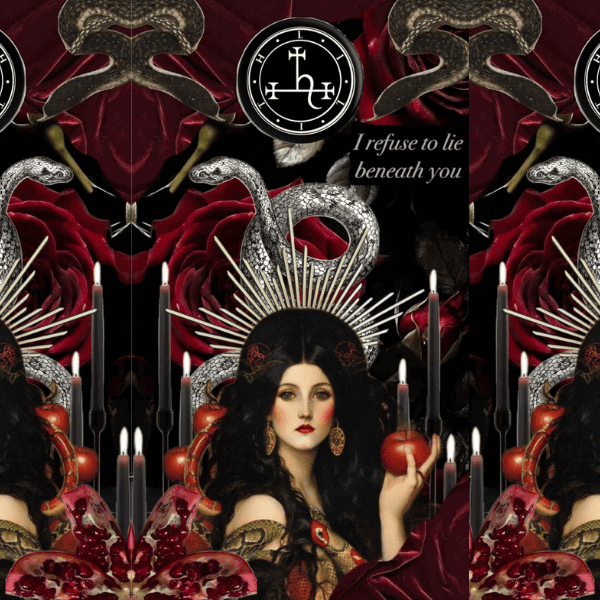
- Adam, positioned above, represented the divine, the heavens, purity.
- Lilith, forced below, was linked to the earth, fertility, death, and the underworld.
Lilith did not accept this hierarchy. She demanded equality—not just in intimacy but in all aspects of life. Adam, unwilling to compromise, refused her demands.
Frustrated, Lilith spoke the secret name of God and fled paradise. She sought refuge with none other than Satan, who was hiding near the Red Sea. There, she became his wife.
Lilith’s Descent into Darkness
Meanwhile, Adam was left alone in paradise. He begged God to bring Lilith back. God sent three angels to find her, warning that if she refused to return, one hundred of her children would die every day.
Lilith did not yield. She bore the pain of losing her own offspring rather than surrender to Adam.
Realizing Adam would remain alone, God fashioned a new wife for him—Eve. But unlike Lilith, Eve was not formed from the same earth as Adam. Instead, she was shaped from his rib—a part of him. She would always be bound to him, unable to defy his authority.
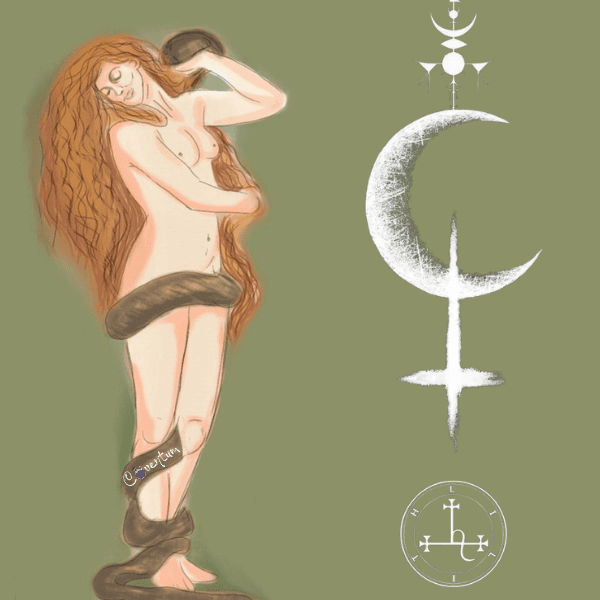
Adam accepted Eve readily. After all, she looked just like Lilith. And this time, there would be no rebellion.
Lilith, however, was far from done.
A Mother, a Witch, a Monster?
Heartbroken and vengeful, Lilith could not bear to see Adam happy. Disguised as a serpent, she slithered back into paradise, whispering to Eve. With careful persuasion, she convinced Eve to eat the forbidden fruit. The rest is history—Adam and Eve were cast out of Eden, cursed with mortality.
Lilith, who had not eaten from the tree, remained immortal. But her revenge came at a cost: she was forever branded as a child-stealing, baby-killing demon.
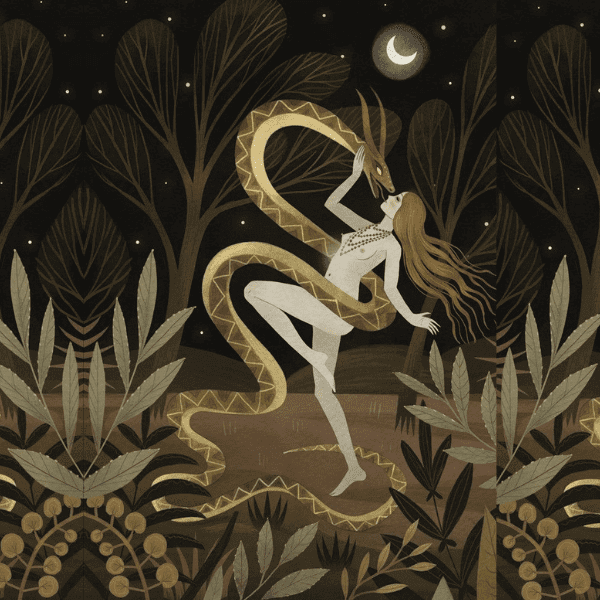
Legends claim that Lilith, in her fury, vowed to haunt newborns. She was said to kill boys within eight days of birth and girls within twenty. Yet even in her darkest form, Lilith made a promise:
She swore that any child wearing an amulet bearing her name would be spared.
Ironically, in making this pact with God, Lilith never entirely severed her divine ties.
The Patriarchal Blueprint: Demonizing & Sanctifying
The stories of Lilith and Eve are not merely ancient myths—they are mirrors reflecting the anxieties of patriarchal systems. In both narratives, womanhood is reduced to a binary: the “monstrous” rebel or the “fallen” subordinate. Lilith’s refusal to obey Adam and her subsequent demonization reveal a foundational fear of female agency. Her story exemplifies how patriarchal societies equate women’s self-determination with chaos, framing defiance as inherently destructive. Eve, meanwhile, represents the paradox of the “ideal” woman: created to serve, yet still blamed for humanity’s suffering. Her sin—curiosity—is weaponized to justify the control of women’s bodies and choices, casting even compliance as culpable. Together, these myths form a cautionary blueprint: women must either conform to subjugation or be exiled as threats to moral and social order.
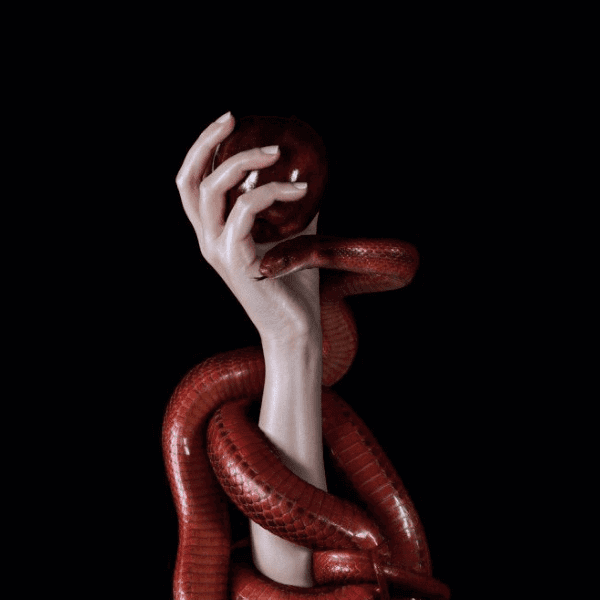
This duality is not accidental. By portraying Lilith as a demon and Eve as a sinner, patriarchal traditions pathologize women’s autonomy while valorizing obedience. Lilith’s transformation into a child-killing hag and Eve’s reduction to a gullible temptress serve the same purpose: to strip women of complexity and moral authority. Such narratives are not relics of the past. They echo in modern debates over reproductive rights, sexual freedom, and gender roles, where women who defy expectations are still labeled “difficult,” “selfish,” or “dangerous.” The vilification of Lilith and the infantilization of Eve are tools of control, designed to legitimize male dominance by casting female independence as unnatural—even evil.
Yet the persistence of Lilith’s story also reveals the fragility of this system. Her refusal to repent, even at the cost of her children, underscores an unyielding demand for equality.
The First Feminist?
The treatment of Lilith and Eve reveals the patriarchal fear of rebellious women. Lilith, who refused submission, was cast as a monster. Eve, who obeyed, was still punished—branded as the first sinner, the downfall of humanity.
For centuries, Lilith remained a sinister figure in folklore. She was a horror icon—a symbol of lust, seduction, and chaos. But the feminist movement of the 20th century gave her a new life.
Rather than seeing her as a demon, feminists reinterpreted Lilith as a symbol of power, autonomy, and defiance. She was not evil—she was merely a woman who refused to be controlled.
Lilith’s Legacy
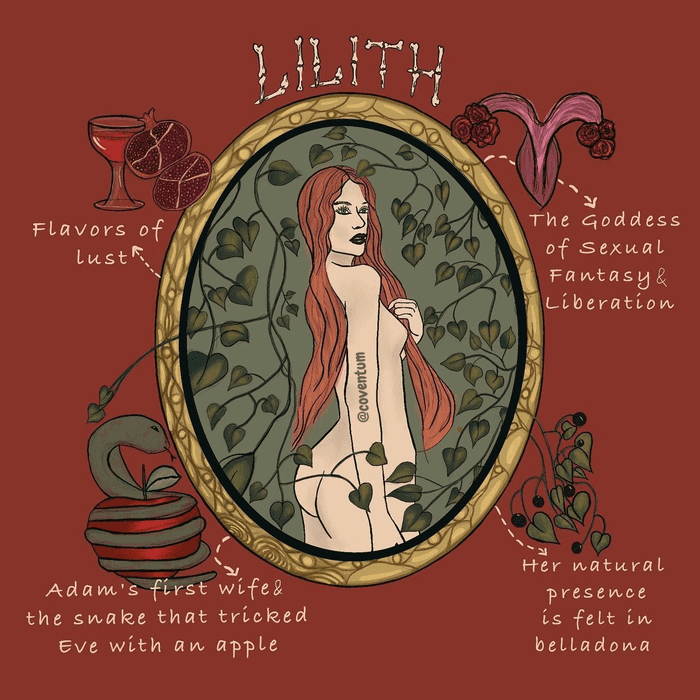
Today, Lilith is no longer just a shadowy demon of ancient texts. She is a goddess of transformation—a force of independence, desire, and untamed passion.
She reminds women of their strength, even when the world tries to silence them. For those who break free from oppression, Lilith stands as an eternal guide.
Walk The Path Of Lilith
The oppression of women is as old as the story of Lilith. Patriarchy has long dictated how women should live, love, and even give birth. And yet, despite being demonized for centuries, Lilith still lives on—not as a monster, but as a symbol of resistance.

For those who feel trapped, powerless, or forced to conform, Lilith offers a path of strength, sensuality, and healing. She is not an easy goddess to walk with, but she opens doors that lead to profound self-discovery.
What We Learned From Lilith
So if you feel drawn to her, listen. Lilith will ask you to confront your hidden wounds, your darkness, your power. It will be uncomfortable. It will be intense. But it will be liberating.
Lilith is not just a story from the past—she is a force alive in all of us, waiting to be reclaimed.
And the world will never forget her again.

References:
- “Dictionary of Deities and Demons in the Bible“ edited by Karel van der Toorn, Bob Becking, and Pieter W. van der Horst
- “The Origins and History of Consciousness” by Erich Neumann
- “Standing Again at Sinai: Judaism from a Feminist Perspective” by Judith Plaskow
- “Lilith” – Encyclopædia Britannica
- “The Zohar” (Primary Kabbalistic Text): Wikipedia
- “The Coming of Lilith” by Judith Plaskow: Jstor


[…] figures in mythology captivate like the ancient Lilith goddess. She’s a rebel, a dark enchantress, and an archetype of independence. Across ages and cultures, […]
[…] before Eve, the Lilith goddess story begins in Mesopotamia. As the Sumerian goddess, she emerged from the wild edges of […]
[…] consider Lilith to be the first feminist figure in Jewish folklore. She refused to submit to Adam and chose exile […]